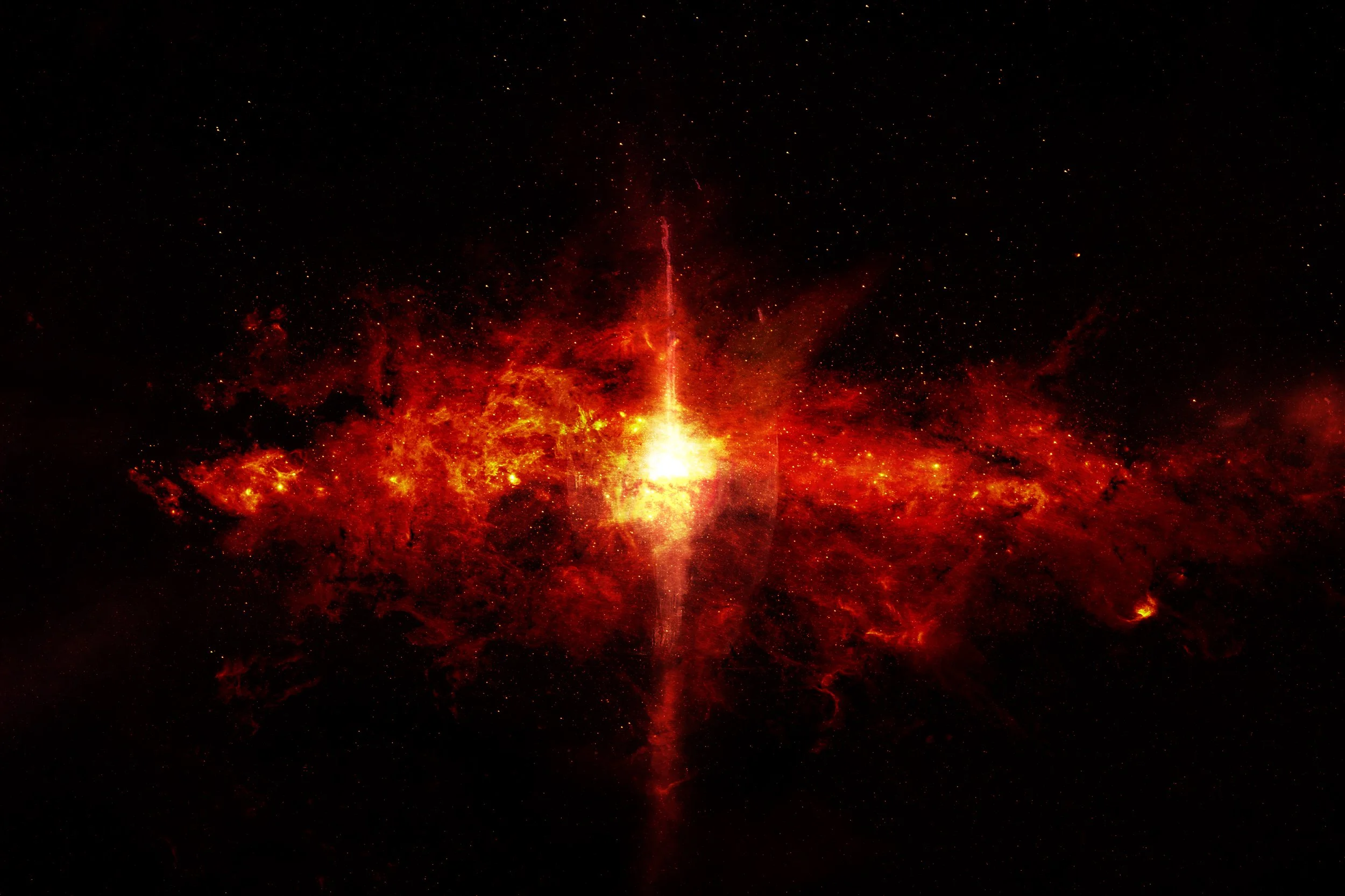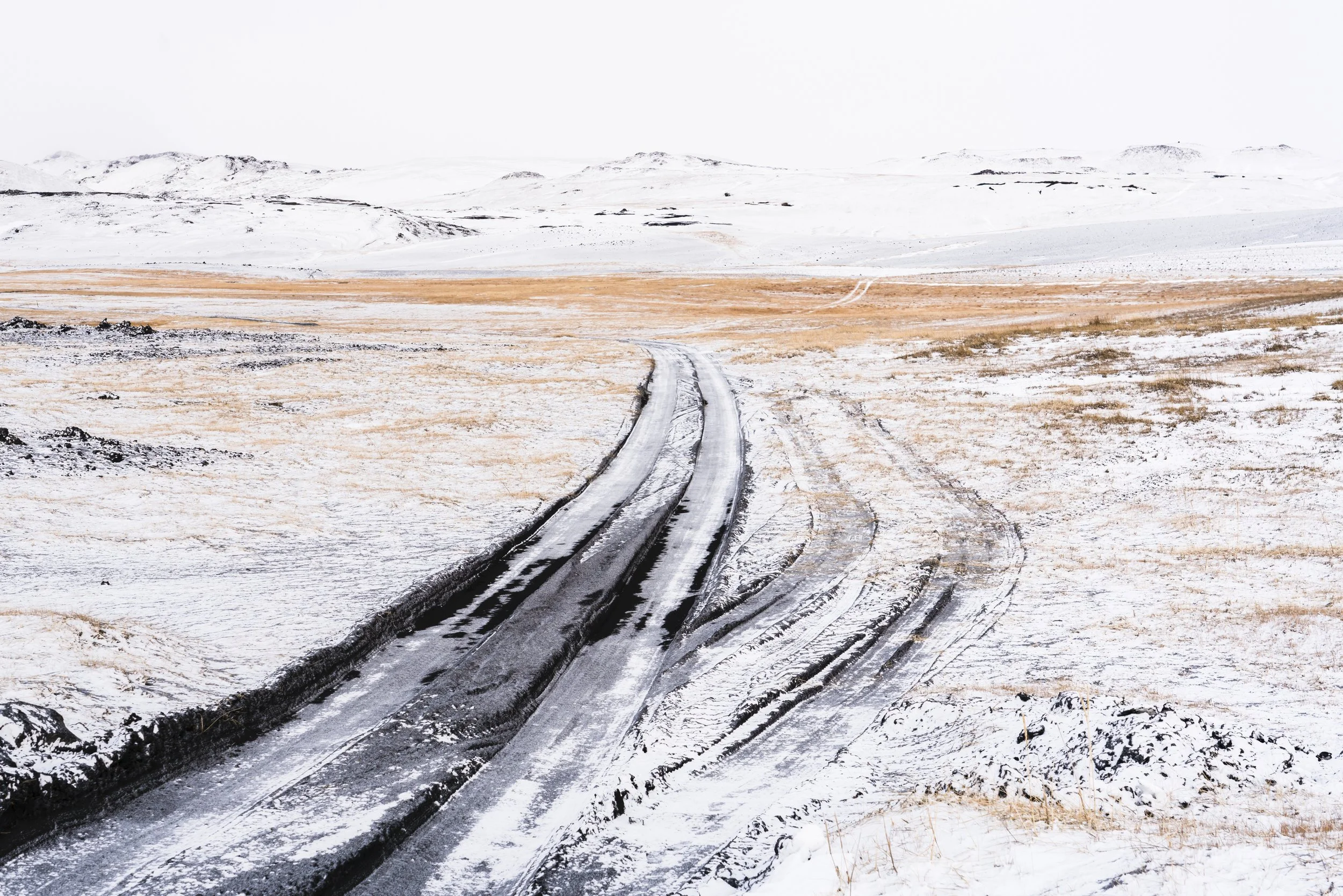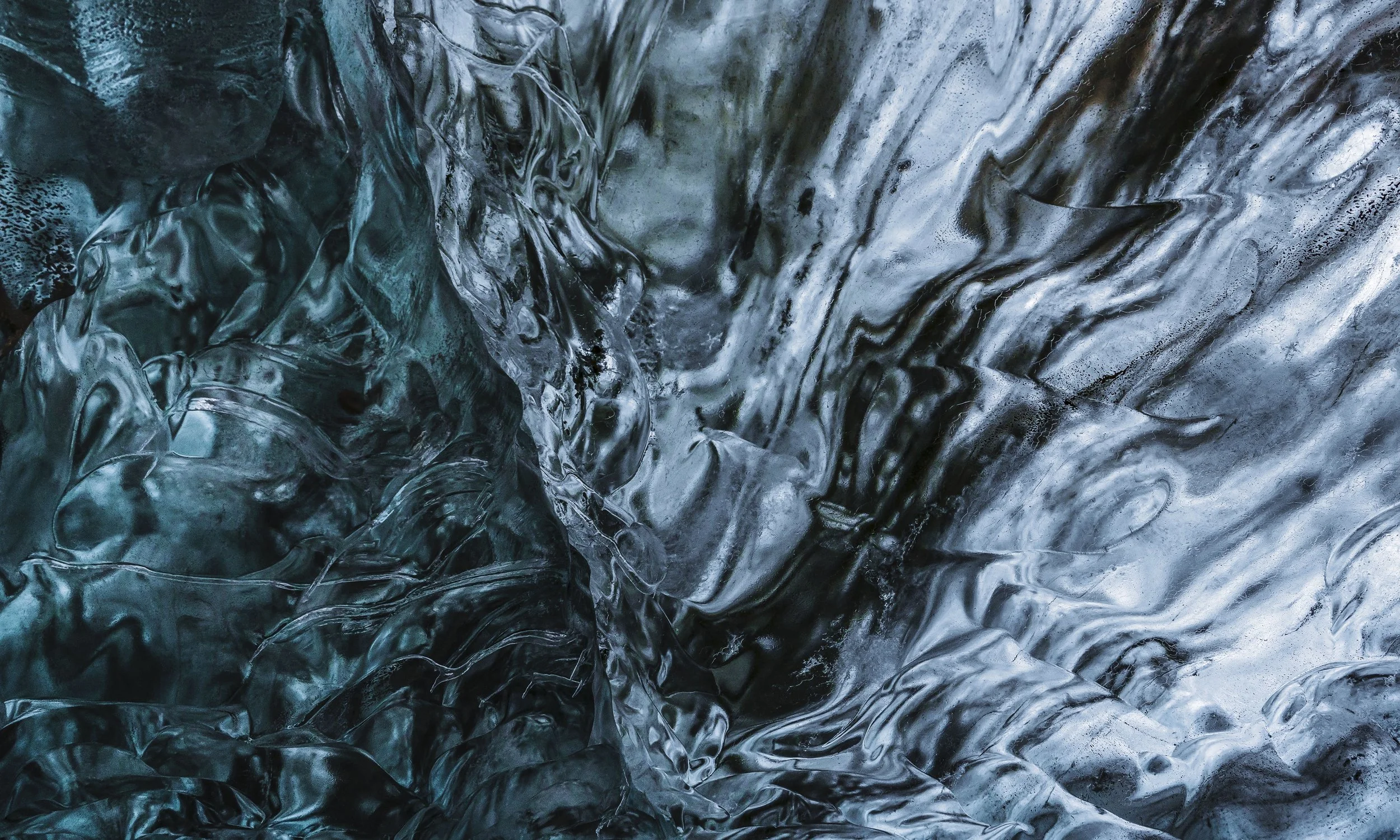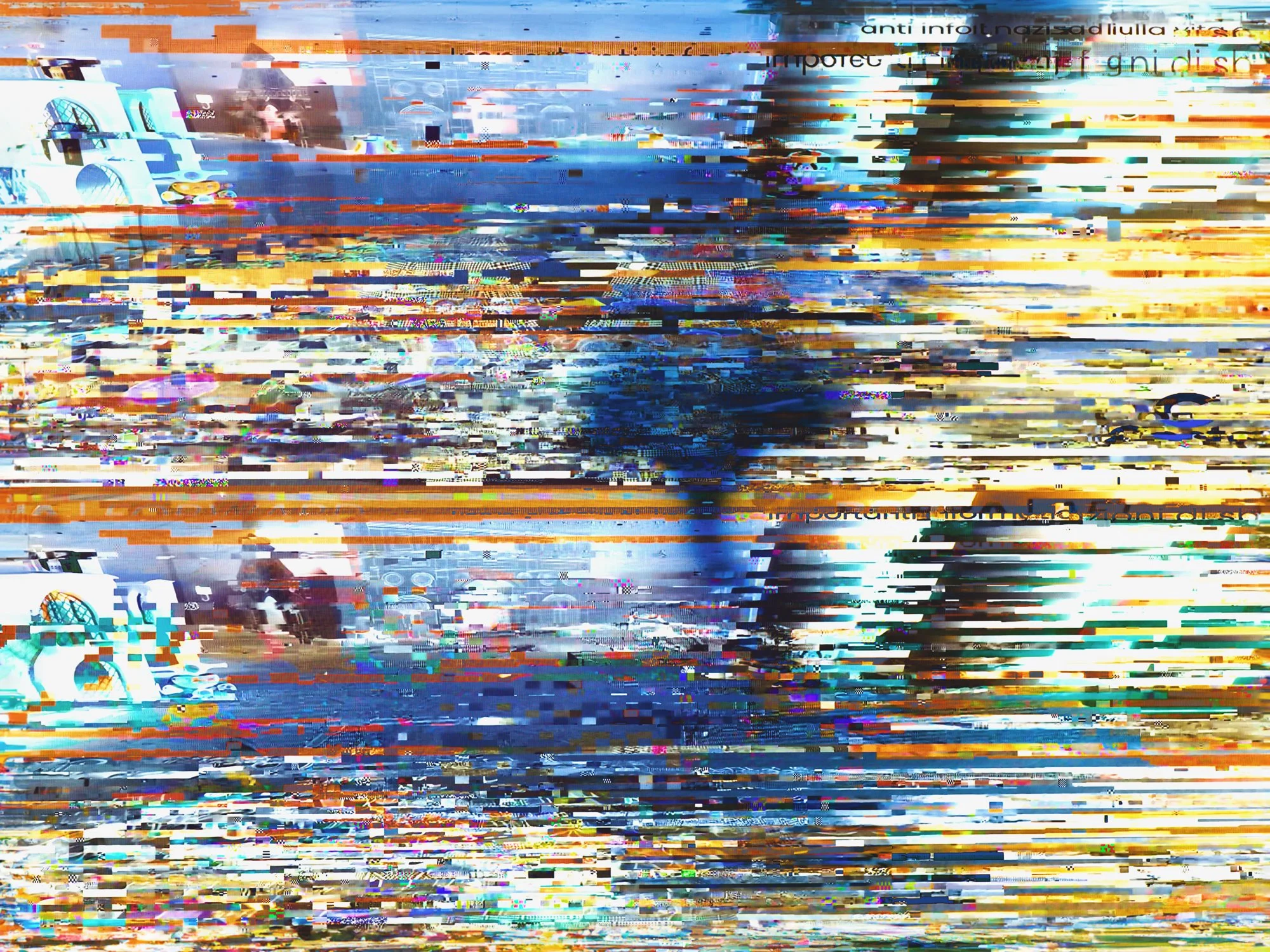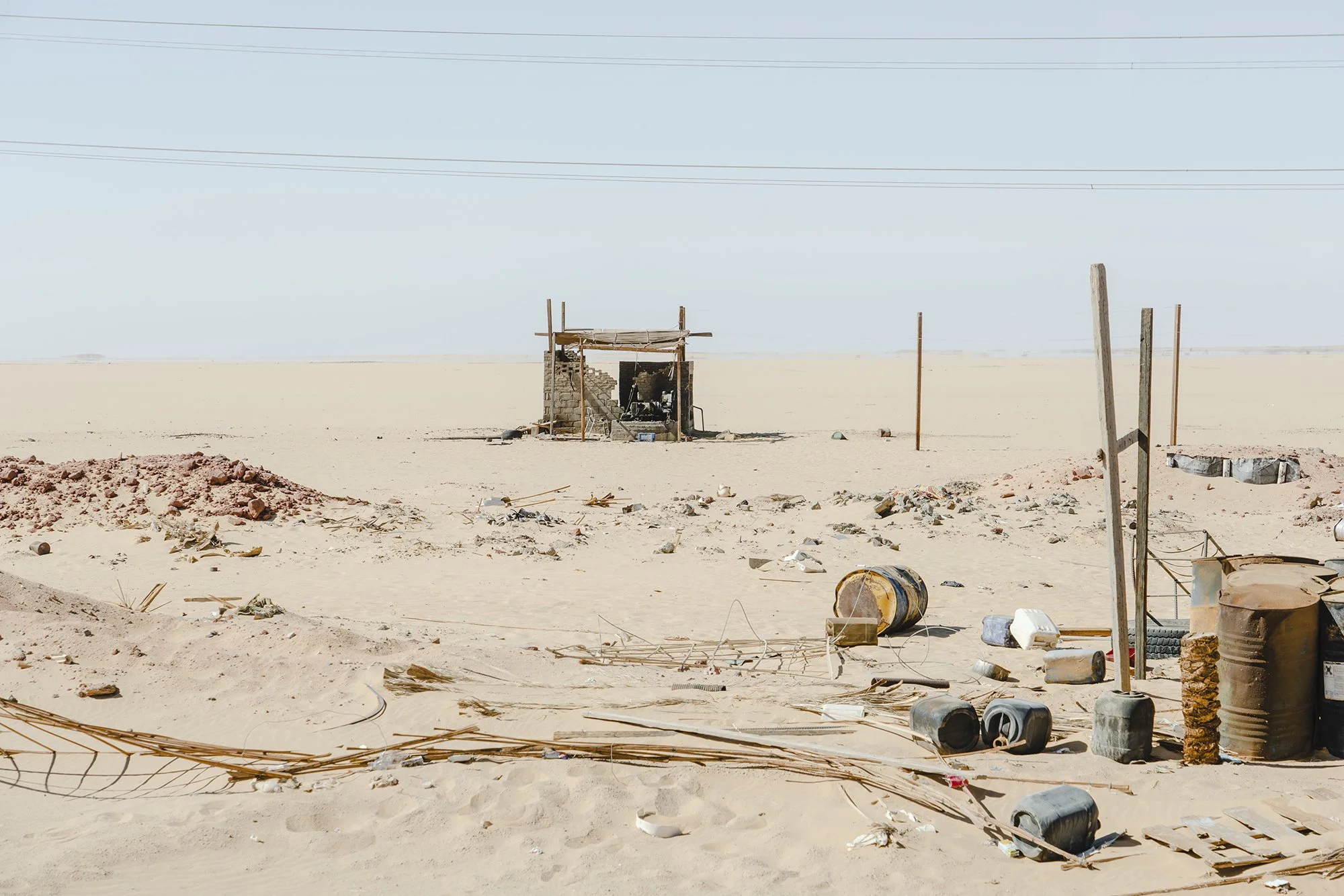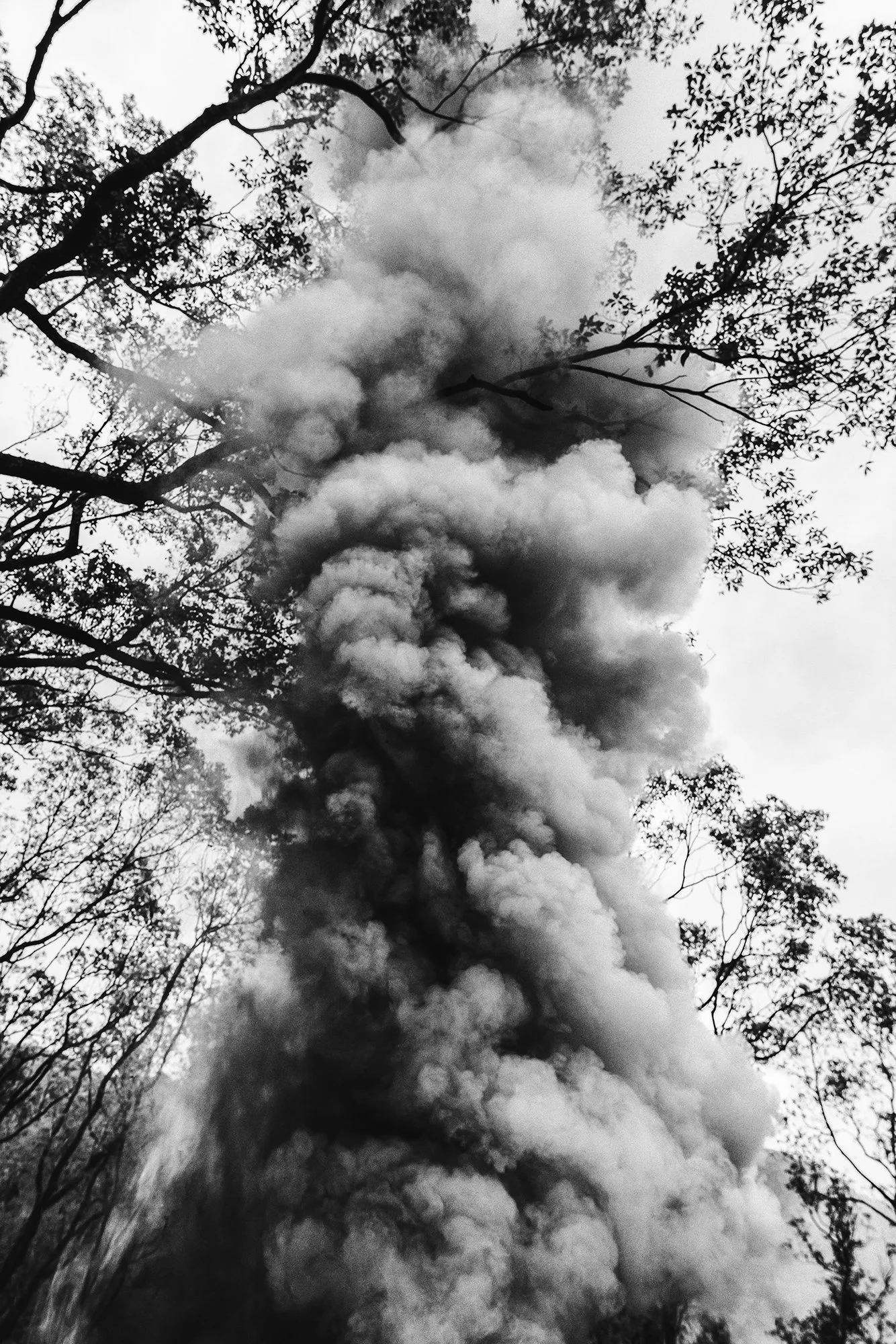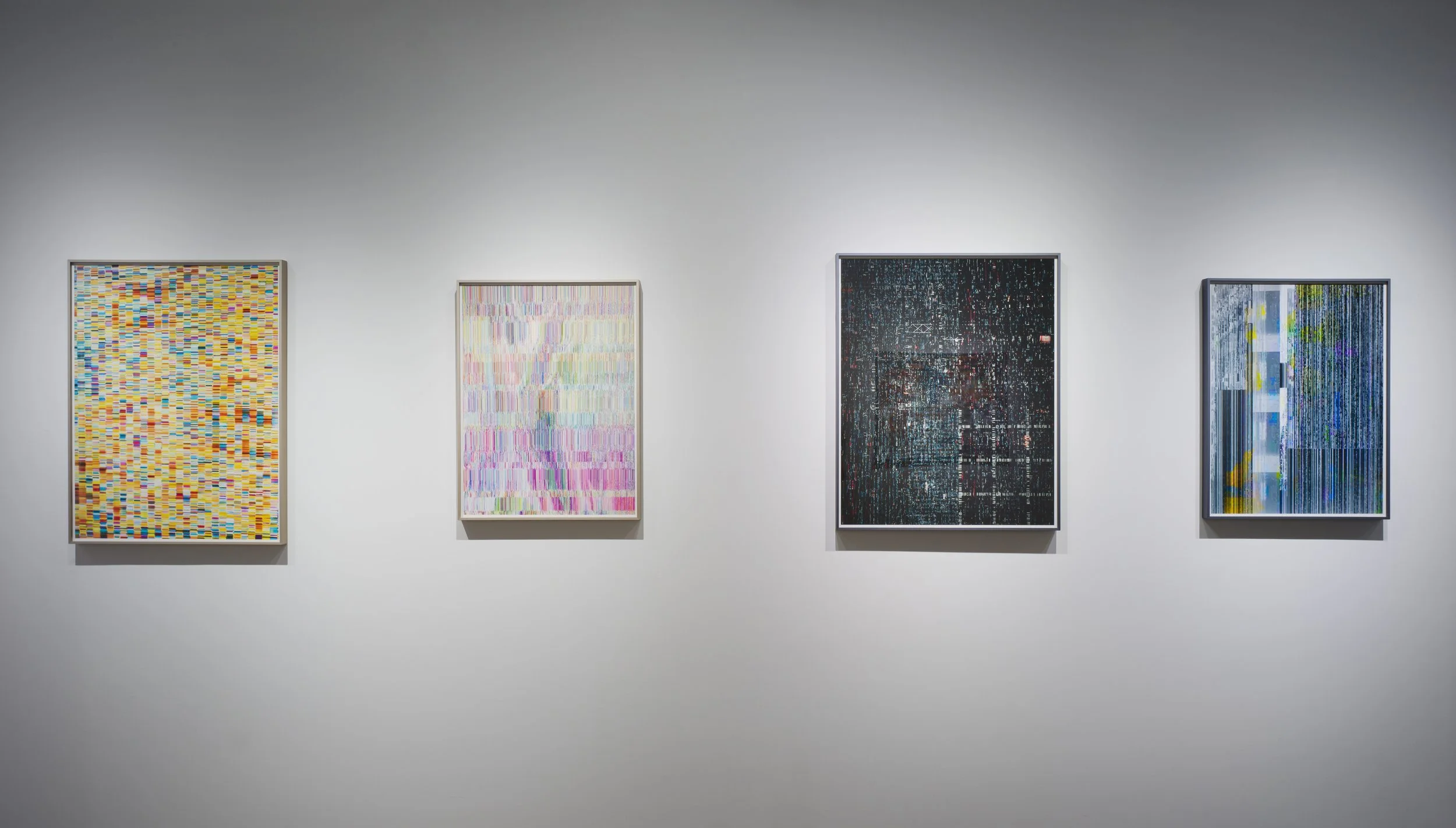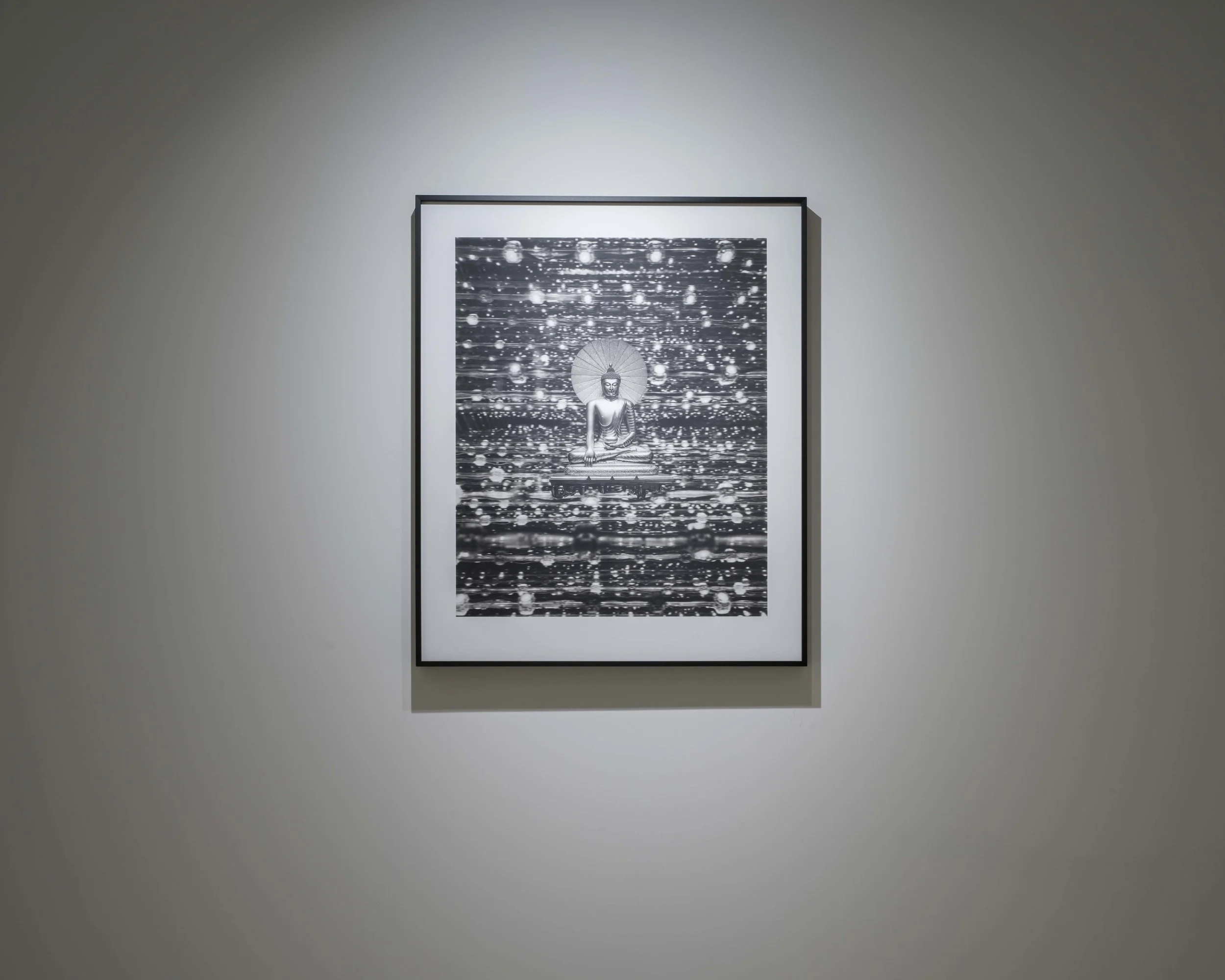Cosmic Allegories: The Photographic Worlds of Yu-Hsu Chou
Rooted in science and shaped by years of searching, this work marks a return to self—where photography transcends documentation to reveal unseen worlds and shifting horizons.
At the 2023 Florence Biennale, a viewer stood silently before Yu-Hsu Chou’s Essere, then asked, “Is that I am you?” The exhibition’s theme that year—I am you—made her words uncannily resonant. Chou’s quiet reply, “Yes,” captured not only the spirit of the Biennale but also the essence of his artistic philosophy: photography that transcends representation to create emotional and existential resonance across languages, cultures, and borders.
Created during one of the most difficult periods of his life, marked by depression and introspection, Essere (Italian for “to be”) embodies Chou’s inquiry into the nature of existence. Composed of overlapping shadows and mesh-like structures, the work dissolves the boundaries between physical reality and inner perception, inviting viewers to confront the fragile line between what is seen and what is felt.
“I looked at my shadow and no longer knew which was real.”
From scientific training to artistic practice, Yu-Hsu’s career has remained a continuous inquiry: how do human beings locate themselves in the universe, and can images offer another way of understanding existence?
From Science to Self
Born in 1969 in Taiwan, Yu-Hsu Chou was originally trained in computer science. The rigor of this background continues to shape his artistic process. For Yu-Hsu, every project begins with a triad of questions: Why, What, and How.
His mid-life return to photography in 2013 was not simply a career transition but, in his words, a “return to self.” After sixteen years in professional life, he decided to pursue what he truly wanted. “It was a correction of my life’s trajectory,” he recalls. “I wanted to stop spending my time on everything except myself. Photography became a way to align with who I really am.”
“Photography can move beyond what is visible.”
Drawing on Chinese mythology, Western fairy tales, and allegorical literature, Yu-Hsu’s imagery blurs the line between truth and fiction. His practice evokes forgotten memories, constructs visual fables, and questions appearances that seem self-evident. Also said “Not every landscape is what it seems.”
The 7th Universe
The 7th Universe begins with subtle discoveries embedded within the visible world, where thought and imagination are given limitless space to roam.This series starts from the real surfaces of our planet and transforms them into symbolic terrains—photographed and reimagined to resemble cosmic vistas, planetary landscapes, nebulae, and starfields stretching toward distant horizons. Through the camera’s lens, these earthly scenes become portals—spaces both familiar and otherworldly, as though standing on a planet far from home. The work reminds us that Earth is not apart from the cosmos but a member of its infinite expanse.
By turning overlooked fragments of the world into allegories of the universe, The 7th Universe rekindles awe for the immensity and mystery of nature, and calls for a renewed sense of care and stewardship for the planet we inhabit.
Signals
In Signals, Yu-Hsu transforms electronic glitches into a new visual language, treating interference not as error but as revelation. The passively received signals of television and computer screens, once disrupted, take on an unexpected agency—composing images that seem to arise on their own.
Rather than manipulating code, Yu-Hsu patiently waits for these moments, capturing them as they appear. Some works are layered and reconstructed, turning fragments of time into new spatial dimensions; others retain their original precision, their colors adjusted to heighten resonance.
Through this process, glitches become signifiers—symbols of both chaos and hidden order, of chance and creation. The resulting images invite viewers into a space where reality is overlaid and interrupted, prompting them to see digital noise not as failure, but as an opening to another world.
The last landscape
In the last landscape, Yu-Hsu imagines the Earth after humanity has vanished—whether through war, ecological collapse, or nature’s silent retaliation. His images are not simple ruins but visions of a future archaeology: fractured skies, eroded terrains, and horizons trembling as if holding the memory of what once existed.
Through photography, Yu-Hsu describes this “final landscape,” preserving the last traces of human presence before everything returns to zero. These works are both warning and witness, asking viewers to confront the fragility of civilization and to consider what will remain when we are gone.
Yu-Hsu’s work has been recognized internationally, most notably with a Special Commendation from the President at the XIV Florence Biennale (2023) and acquisitions by Taiwan’s National Art Bank (The Paper Planet, 2018; Landing on Pluto, 2020). He has received multiple International Photography Awards (IPA) across categories such as Fine Art, Architecture, and Travel, as well as Silver and Bronze prizes at the France PX3 Award. His first-place win at the AJ Hotel Architecture Photography Contest (2019) and distinctions from competitions including Sony α7, SWPA, and Photographer’s Forum further highlight both his versatility and determination to bring Taiwanese photography onto the global stage.
For Yu-Hsu, photography is both a discipline and a liberation. “Photography,” he says, “is the act of creating infinite possibilities within the restrictive framework of reality.” Each image begins with the raw material of the real—light, surface, time—but is shaped through choice, perspective, and imagination.
This understanding frames photography not as passive documentation but as an active, almost performative act of reinterpreting the world. In Yu-Hsu’s view, every photograph is both a record and a proposition, challenging the viewer to see reality as contingent, layered, and open to reinvention.
“The task is no longer to prove reality, but to reveal how it is constructed.”
In an age of AI and algorithmic generation, Yu-Hsu sees photography’s role as shifting fundamentally. For him, the essential question is authorship: is the image an expression of human imagination, or merely computation? His view reframes current anxieties—not a fear of technology, but a defense of originality as the wisdom that keeps us human.
From The 7th Universe to Signals to The last scenery, Yu-Hsu Chou positions photography not as documentation but as philosophical inquiry. His images extend scientific reasoning into mythic imagination, reaching beyond the visible to stage encounters with the unknown while reflecting back on human existence itself.
In an era of digital computation and civilizational crises, his work reminds us that photography’s ultimate task is not to record, but to ask—what it means to be.





